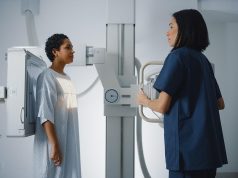Percent of patients receiving subsequent colonoscopy within 3.5 years varies from 18.3 to 59.5 percent
THURSDAY, Dec. 6, 2018 (HealthDay News) — Many patients with three or more adenomas or any adenoma with villous/tubulovillous features do not receive a subsequent colonoscopy within 3.5 years, according to a study published online Nov. 20 in Cancer Epidemiology, Biomarkers & Prevention.
Jessica Chubak, Ph.D., from Kaiser Permanente Washington Health Research Institute in Seattle, and colleagues describe the patterns of and factors associated with subsequent colonoscopy among individuals with three or more adenomas and/or at least one adenoma with villous/tubulovillous histology. Data were included for 6,909 patients with advanced adenomas.
The researchers found that across health care systems, the percent of patients receiving a subsequent colonoscopy six months to 3.5 years later varied from 18.3 to 59.5 percent. In the multivariable model, the differences remained significant. Subsequent colonoscopy was more likely among patients with three or more adenomas versus those with one to two villous/tubulovillous adenomas. Compared with patients ages 50 to 54 years at their index colonoscopy, subsequent colonoscopy was more common for patients ages 60 to 74 years and was less common among those ages 80 to 89 years. There was generally no correlation for sex, race/ethnicity, and comorbidity index score with subsequent colonoscopy receipt.
“We recommend that future studies assessing the effectiveness of interventions to increase surveillance colonoscopy utilization evaluate intervention effectiveness in patient subgroups to try to ensure benefits and harms are equitable and health disparities are minimized,” the authors write.
One author disclosed financial ties to Exact Sciences.
Copyright © 2018 HealthDay. All rights reserved.








